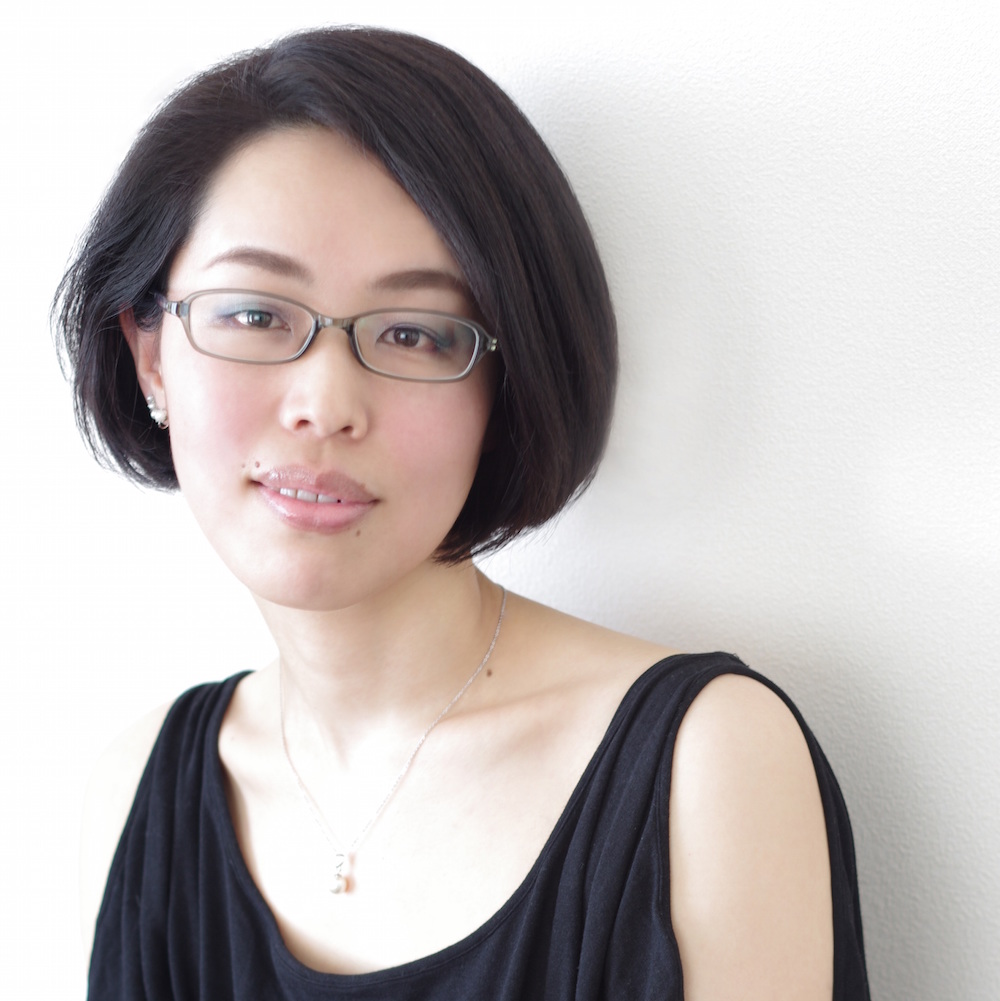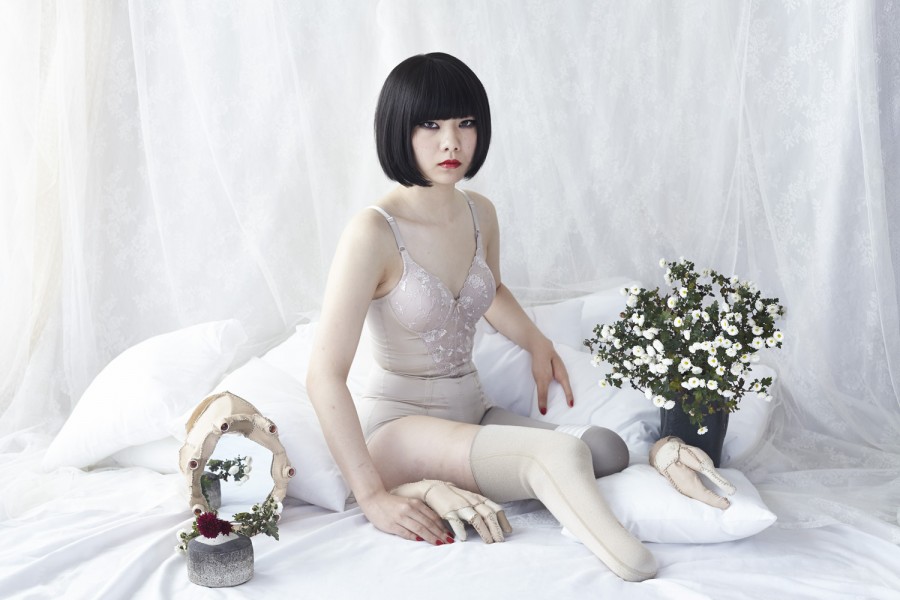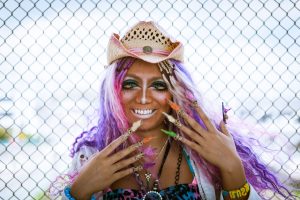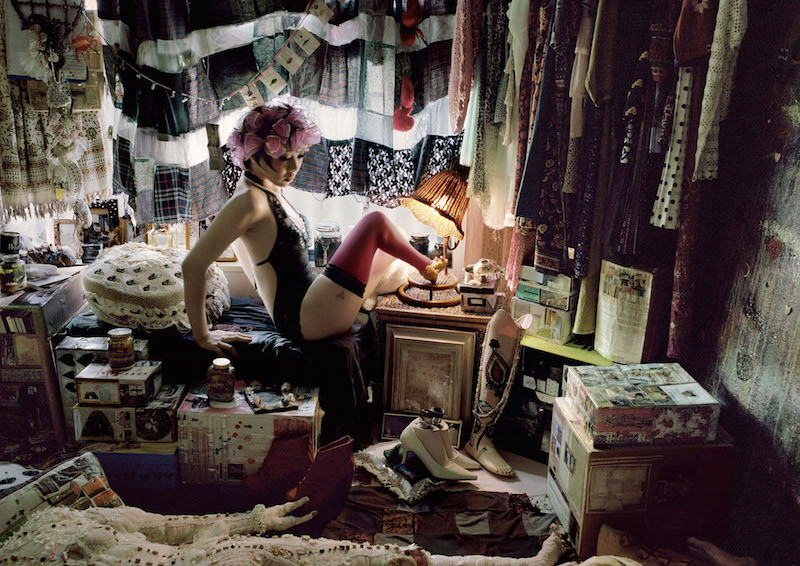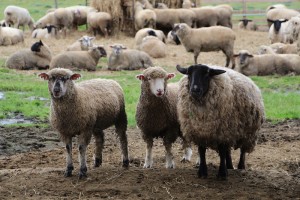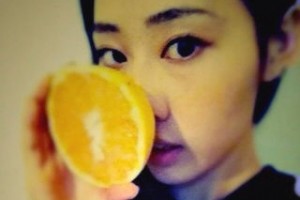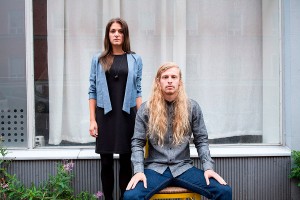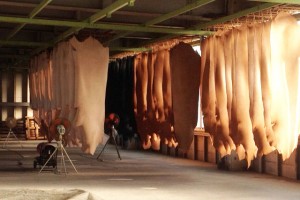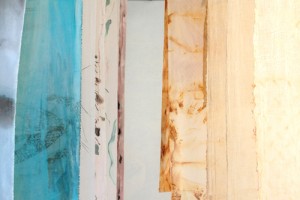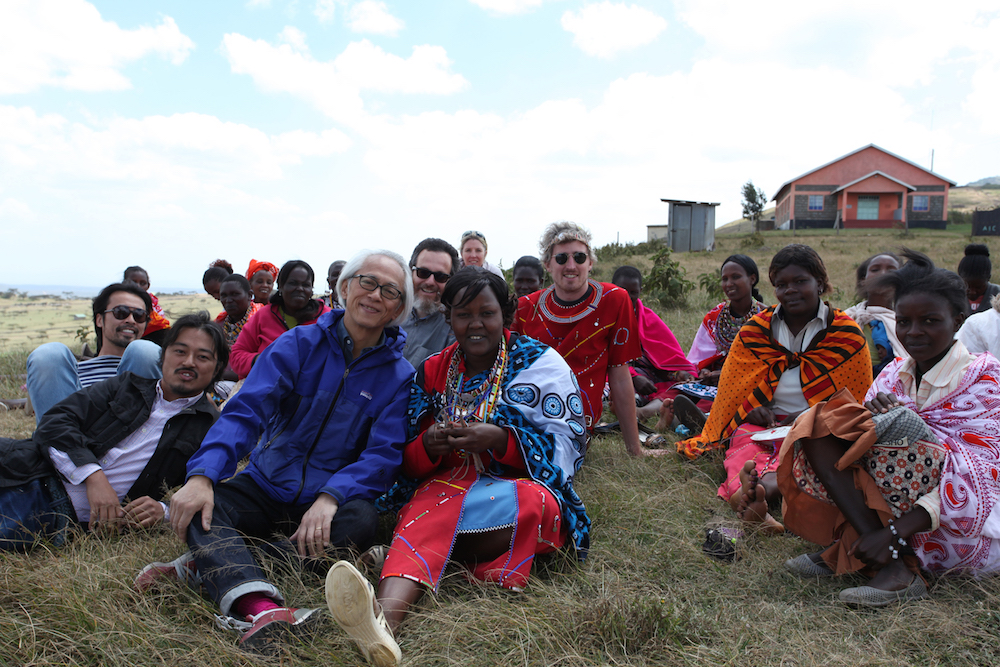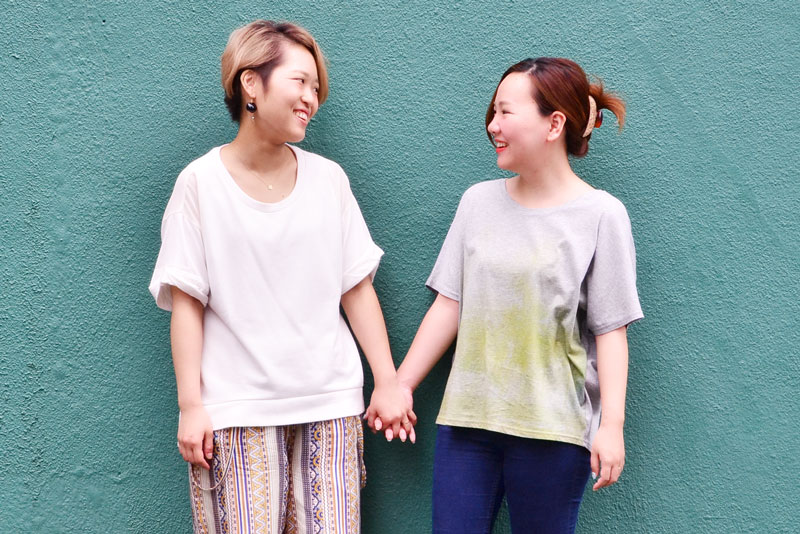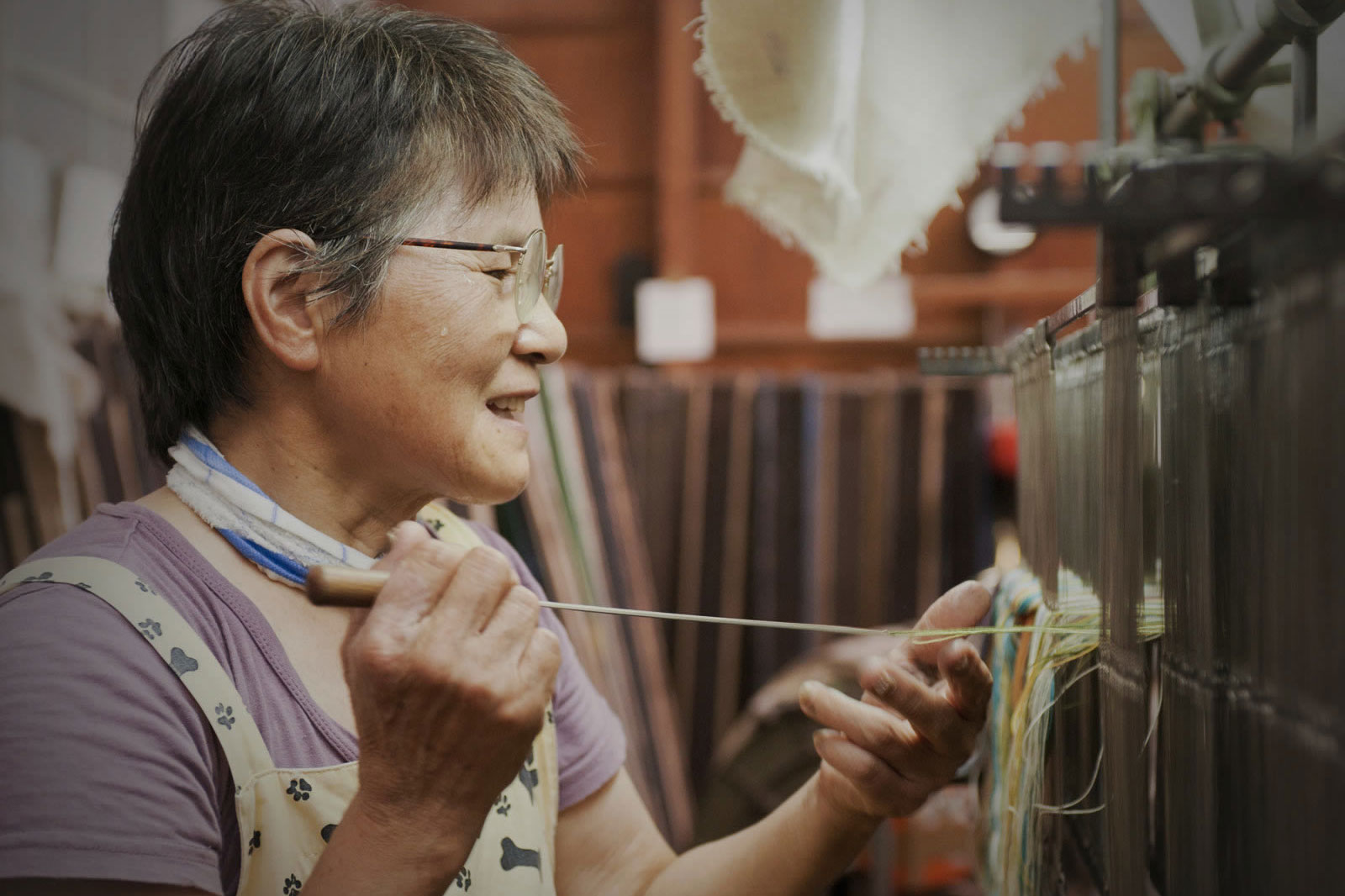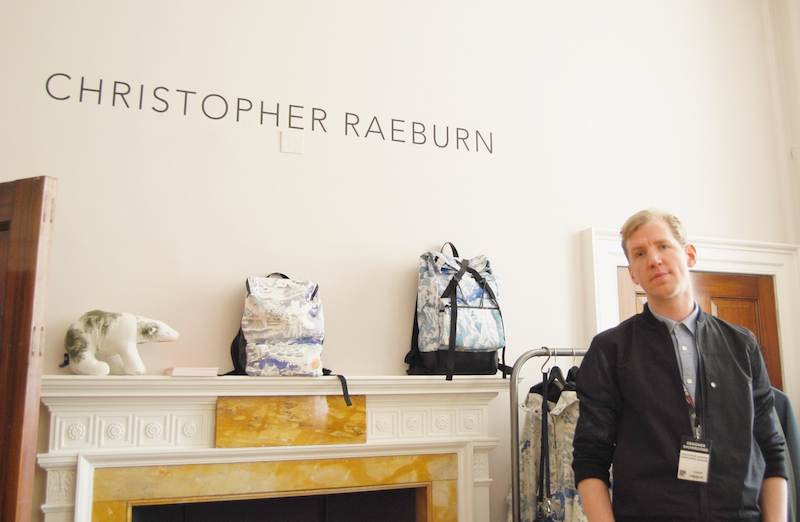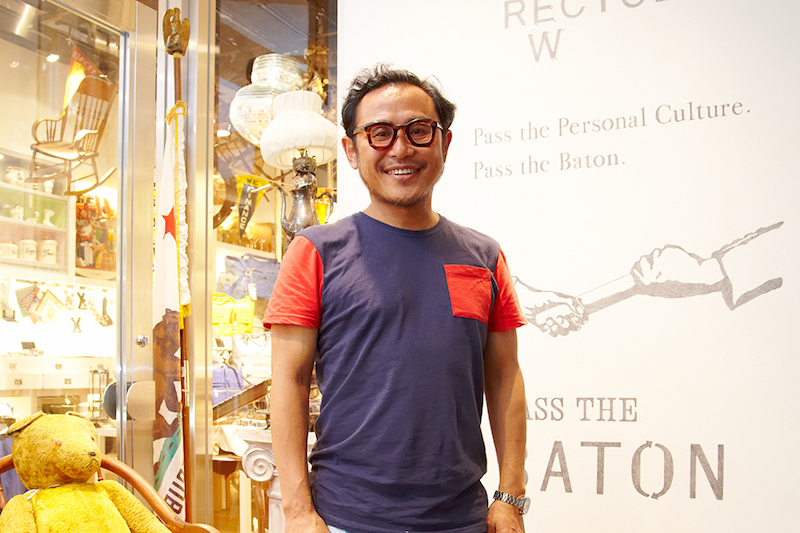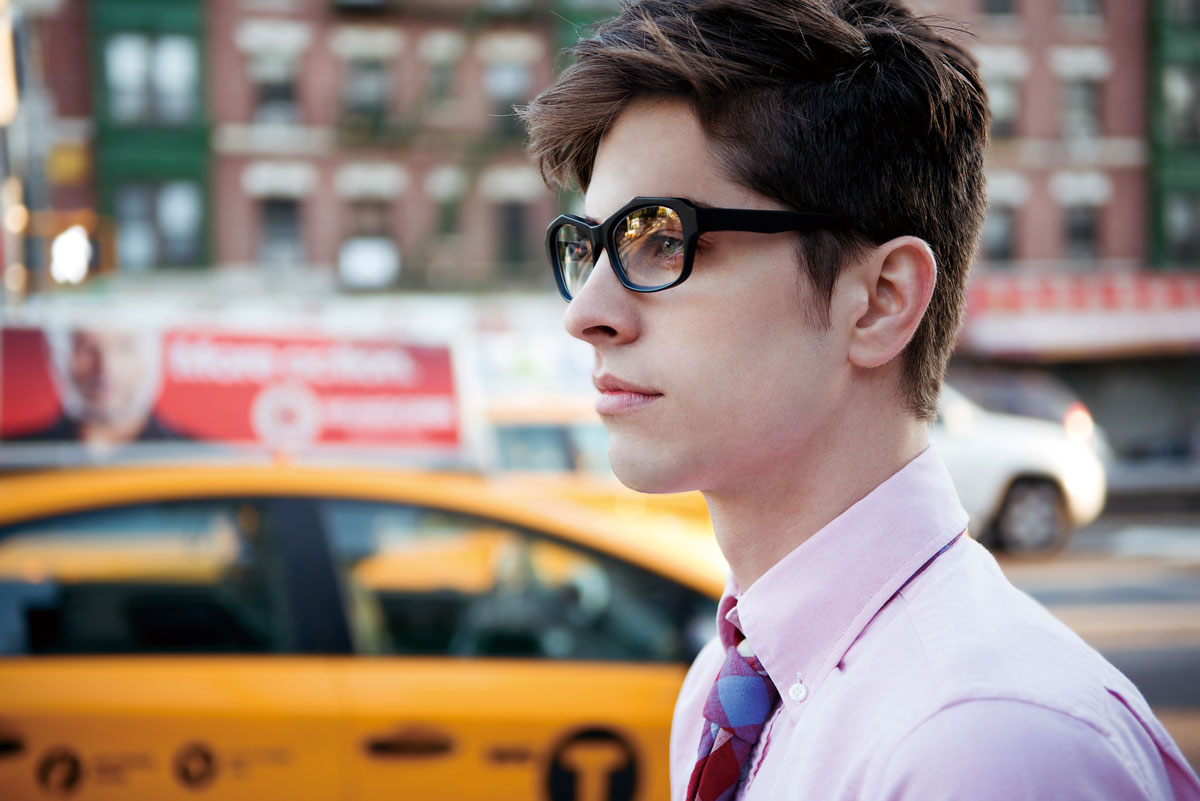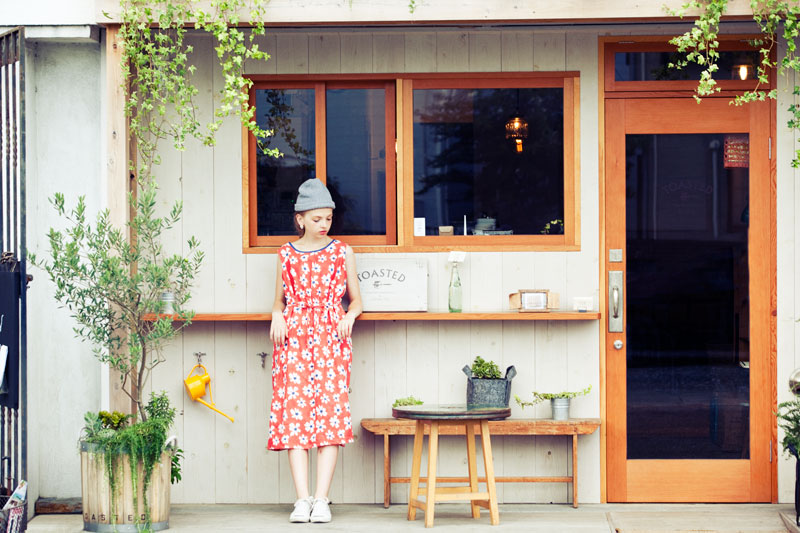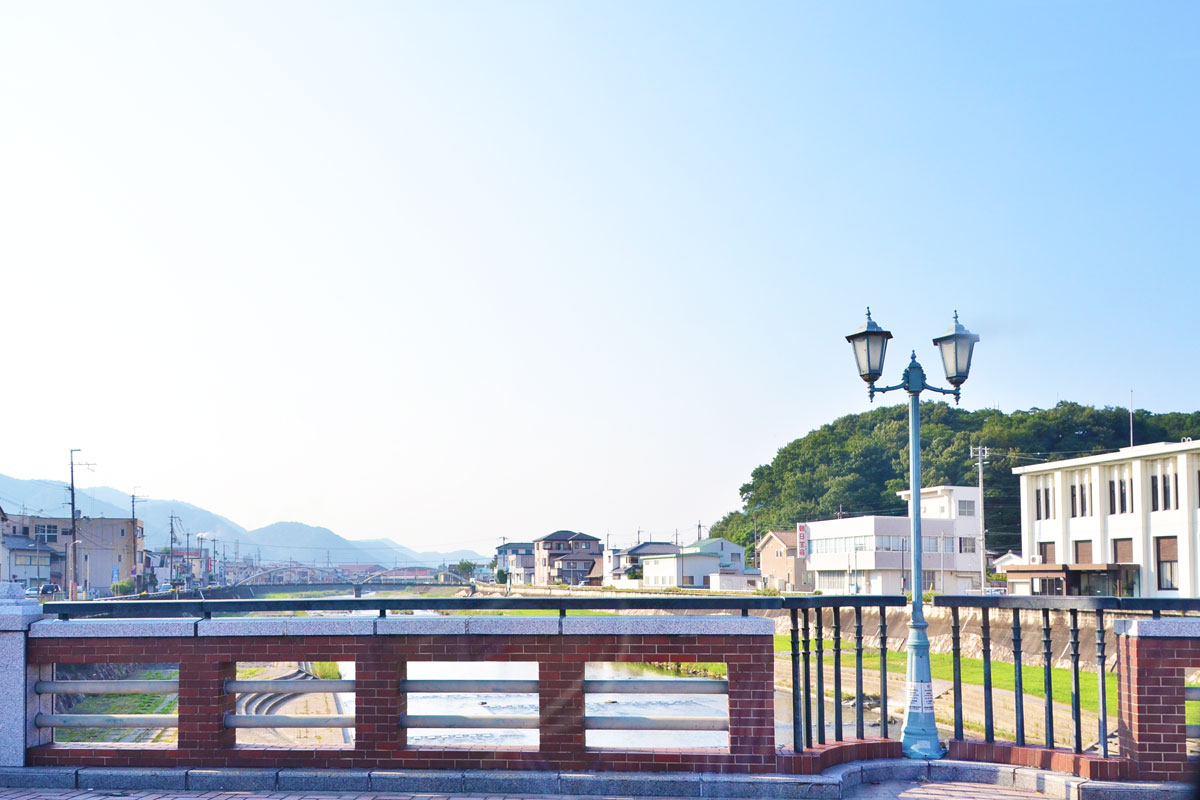Rust doesn’t have a good image. Rust on the equipment in a schoolyard, rust on the brake of a bicycle . . . . As we look into the past, most of our memories of rust are not good. We have always wished there’s no rust.
Could you imagine that rust can create beautiful works by dyeing cloth?
In fact, rust has been used as face paint, as well as part of the mixture of coal, soil, and minerals that was used to draw pictures on cave walls during prehistoric times. Rust dyeing is a process also used to dye cloth with rust colorings.
The Inspiring “sabi-nuno” World
The installation exhibition, Kasanerukoto, introduced the author to the world of sabi-nuno. A number of layered cloths painted with rust swayed in the wind. It was a sight to see.
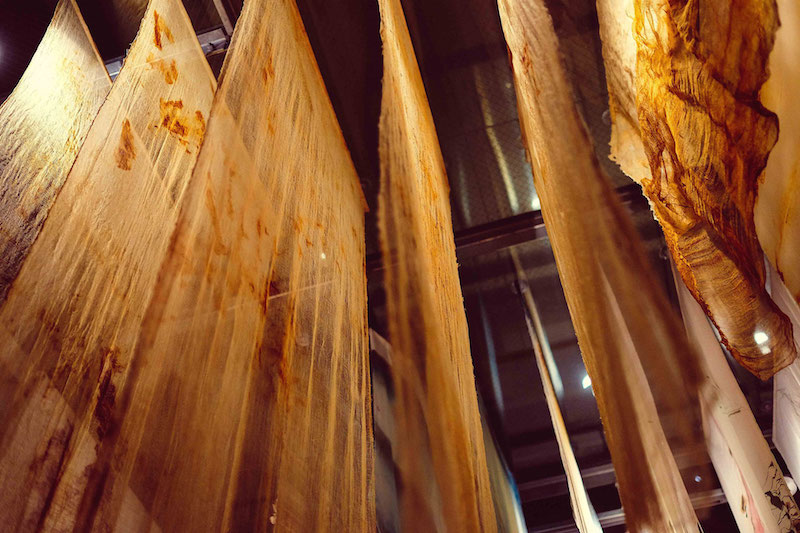
Installation exhibition “Kasanerukoto” by sabi-nuno, held in June 2014.
The variation of colors cannot be imagined by the word “rust.” The texture differs with the different amounts of rust and the different types of cloth. You can feel your senses sharpen by looking at the beauty, power, and the fragility that have been drawn by the daily phenomena.
Wanting to know more about rust dyeing, I visited Keico Murakami, who owns a sabi-nuno shop in Matsudo, Chiba. When I told her that I could feel my senses of touch and sight sharpen, she said,
I’m glad to hear that. One of the themes of sabi-nuno is “senses.” I like to create works that stimulate people’s senses.
The exhibition includes old and new works. The term kasanerukoto, which means “to layer,” suggests not only to layer cloth but to also layer the fluctuations of time, the feelings of the viewers, and many other things.
The Beginnings: Rust = Water+Heat+Oxygen
Murakami encountered rust dyeing when she studied at Musashino Art University. Inspired by her senior’s rust dyeing work, she ventured into that artistic world.
At first, the only thing she learned was the principle that rust is created from water, heat, and oxygen. Through trial and error, she conducted experiments based on this principle with a huge ironing board.
Sudo Reiko, one of the highest regarded rust dyeing textile designers and one of the founders of the textile atelier, NUNO, and Manabu Kikuchi, who is also a textile designer, only say they use their unique styles of rust dyeing.
Rust dyeing is based on the principle of rust preparation, but the dyeing styles differ from designer to designer. Interestingly, there is no such thing as “how to dye with rust.” You have to find your own way.
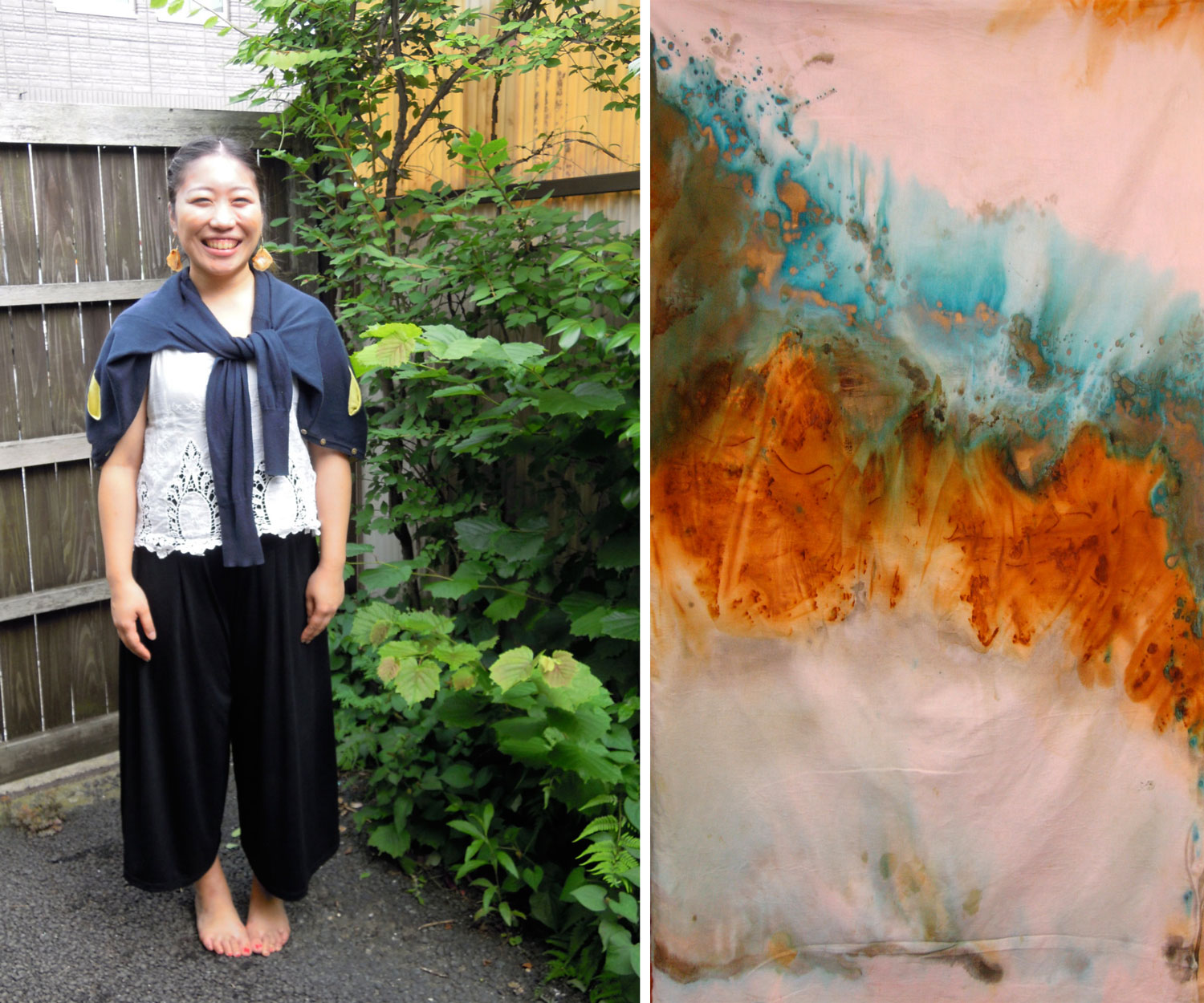
Left: Keico Murakami. After graduating Musashino University of Arts, she worked as an textile-product designer at a company. Later in 2011, she established a brand “sabi-nuno.”
Since she first encountered this method of dyeing, she tried to use the method for her school projects as much as possible, says Murakami.
Simple Steps and the Long Time It Takes to Grow Rust
The artist’s works vary. Some take a few days and some take six months or more. In the garage at her house, she showed how she creates her pieces.
Put a cloth on an iron board, spray it with an acetate solution and moisturize it with a lot of water. These are simple steps, but you have to keep adding water until the rust begins to materialize. You might have to wait for half a year. I think it requires great patience.
When I met Murakami for the first time, the atmosphere around her was so leisurely that I thought time passes differently for her.
A Beautiful Rust-colored World
I asked her about the colors of rust. I expected rust to be brown, but I was impressed by the clear blue and the soft red hues of rust on Murakami’s works.
I create yellowish colors such as brown and orange by oxidizing iron as the first step. To make red, I use rouge, which is oxidized iron. To make blue, I use aerugo, which is oxidized copper.
Compared to the yellowish colors that take time to mature, rouge red and aerugo blue are already used as paints and you can apply them like paint. The sabi-nuno world is created by combining these techniques.
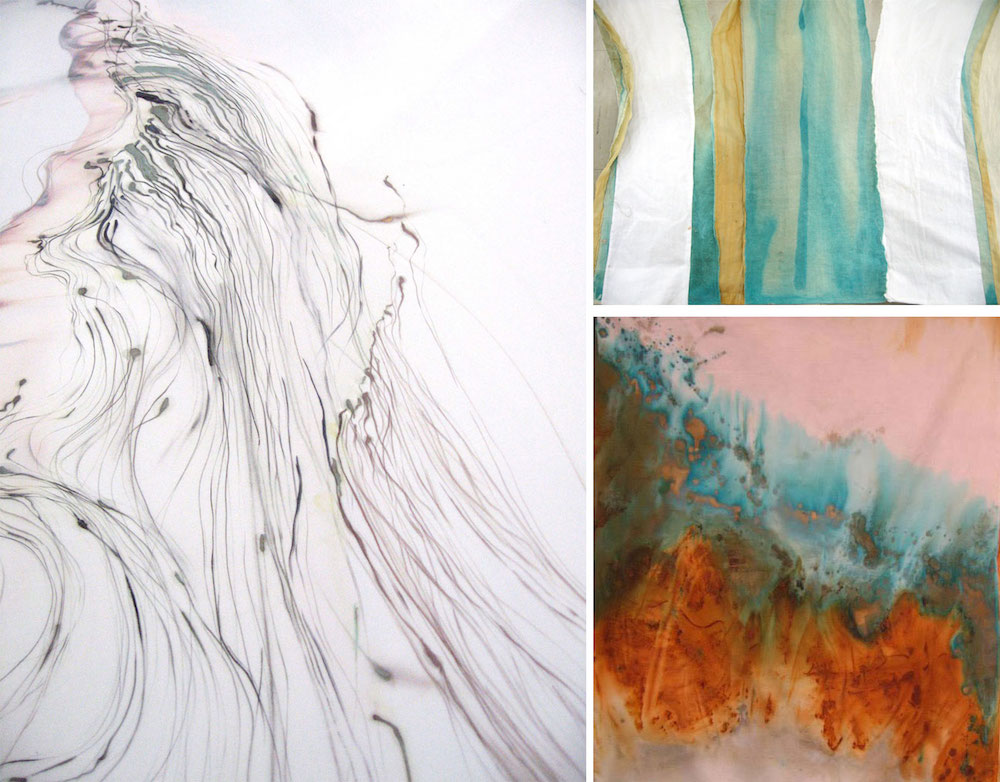
Comparison among the rust dyes. Left: Airy Red from red oxide, RIght-Top: Vivid blue from verdigris, Right-Bottom: Brown so lively that we could sense the touch of it.
From Art to Products and Crafts
So far we’ve seen artistic dimensions of sabi-nuno, but there are commercial dimensions such as products and crafts. The technique is used to make products, such as accessories, clothes, and hats. For crafts, they make tableware and pouches for sadō, the Japanese tea ceremony.
Murakami says,
I started this brand because I wanted more people to know about the world of rust dyeing. sabi-nuno represents the rust world through cloth, so we dye everything made of that material. We especially make things to wear and things which are part of our lives.
The Beauty of Aging Found in Decaying Rust-Dyed Cloths
You can feel Murakami’s love for the rust process when you interview her. What does it mean to her?
Even after the work has been completed, the rust-dyed cloths continue to oxidize and change. There is an overlap with cloths rusting and humans getting older. I think they are similar in that they cannot control the way they grow old. You cannot always be what you want to be. You gain a certain aura, elegance, and dignity as you get older, but the same thing can be said about rust which keeps on changing. I feel even aging is beautiful when I am watching rust.
Finally, I asked Murakami about herself and the future of sabi-nuno.
I like to create products that you spend time with and that you engage with well so that you can be in tune with yourself and live a happy life. Our challenge is to revive the memories of products by means of rust-dyeing. For example, when your mementos and memorial places become rusted, you can collect rust from them and create works dyed with the rust so that you can keep them around you and live a happy life.
(Translation by Akiko Ishige)

